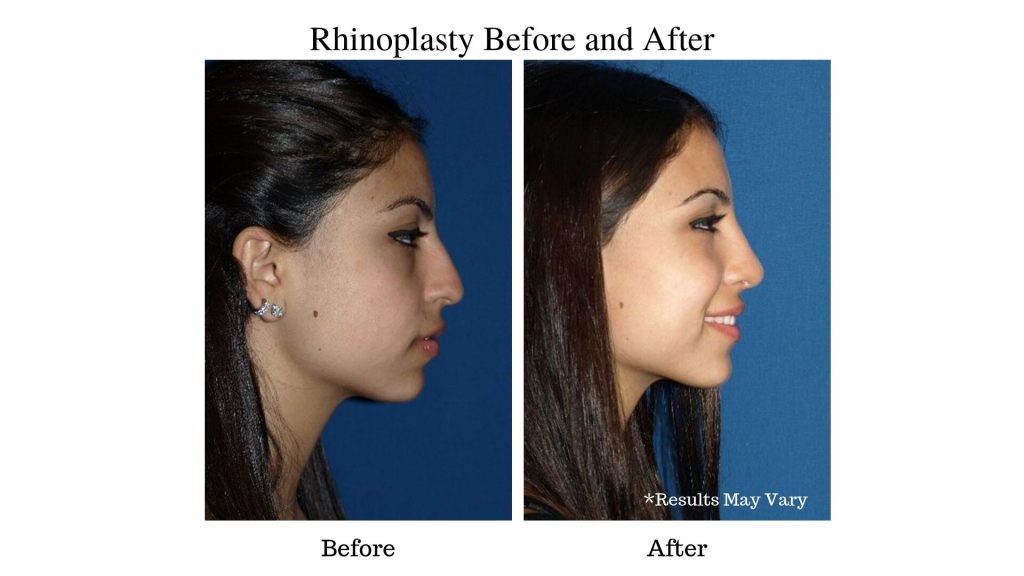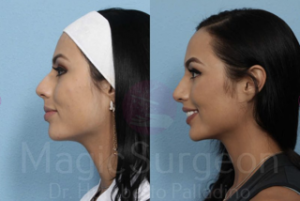Things about Rhinoplasty Surgery Austin
Table of ContentsUnknown Facts About Rhinoplasty AustinThings about Rhinoplasty Surgery AustinAll about Rhinoplasty Surgery AustinSome Known Incorrect Statements About Rhinoplasty Surgery Austin
Ultrasonic rhinoplasty utilizes piezoelectric instruments (scrapers wears, saws) that impact just the bones and the stiff cartilages through ultrasonic vibrations, as the instruments utilized in dental surgery. Making use of piezoelectric instruments requires a more extended method than the isial one, permitting to picture the entire bony vault, to reshape it with rhinosculpture or to activate and support bones after regulated osteotomies.Generally, the cosmetic surgeon initially separates the nasal skin and the soft tissues from the osseo-cartilagenous nasal framework, and then reshapes them, sutures the cuts, and uses either an external or an internal stent, and tape, to debilitate the newly reconstructed nose, and so facilitate the healing of the surgical cuts.

To tape-record the "before-and-after" physiognomies of the nose and the face of the patient, the specific visual viewpoints needed are pictures of the nose seen from the anteroposterior (front-to-back) viewpoint; the lateral view (profiles), the worm's- eye view (from listed below), the bird's- eye view (overhead), and three-quarter-profile views. Picture A. Open nose surgery: At nose job's end, after the cosmetic surgeon has sutured (closed) the cuts, the fixed (new) nose will be dressed, taped, and splinted immobile to allow the undisturbed recovery of the surgical cuts.
Photo B. Open nose surgery: The brand-new nose is prepared with paper tape in order to receive the metal nasal-splint that will debilitate it to maintain its correct shape as a brand-new nose. Picture A. Open nose surgery: Pre-operative, the guidelines (purple) ensured the cosmetic surgeon's accurate cuts in cutting the nasal flaw correction plan.
Some Known Factual Statements About Rhinoplasty Austin

Open nose Discover More Here surgery: After the preliminary taping of the nose, a personalized, metal nasal-splint, developed, cut, and formed by the surgeon, is emplaced to incapacitate and secure the tender tissues of the brand-new nose during convalescence. Photo D. Open rhinoplasty: The taping, emplacement of the metal splint, and dressing of the brand-new nose finish the rhinoplasty treatment - rhinoplasty austin.
Picture 2. Open rhinoplasty: The ideal lower lateral cartilage (blue) is exposed for correction. Photograph 1. Open nose job: The columellar incision marked as a red-dot standard, will help the surgeon in the accurate suturing of the nose. Photo 4. Rhinoplastic correction: A nasal-hump excision plan; the black line delineates the dorsal airplane of the brand-new nose.
Open nose job: the nasal tip is sutured to narrow the nose. Photo 1. Open rhinoplasty: The incisions are endonasal (in the nose), and hence are concealed. The skin-incision to the columella aids the plastic cosmetic surgeon in exactly suturing to hide the scarother than for the columellar incision (red-dot standard) across the nasal base.
Picture 2. Open nose job: The nasal interior. The scissors indicate the lower lateral cartilage (blue), which is among the wing-shaped cartilages that adhere the tip of the nose. The jagged red delineation shows the locale of the columellar cut. Once the skin has been raised from the bone-and-cartilage framework, the surgeon carries out the nasal correction jobs.
The Ultimate Guide To Rhinoplasty Austin
Open nose surgery: To narrow the tip of a too-wide nose, the cosmetic surgeon initially identifies the reason for the excess nasal width. The stitch being emplaced will narrow the idea of the nose. The red delineation suggests the edge of the nose-tip cartilage, which is narrowed when the surgeon tightens up the folded cartilage apex.
Photo 4. Nasal hump excision: The black delineation indicates the preferred nose-reduction result: a straight nose. The nasal hump is bone (red) above the scalloped grey line, and cartilage (blue) listed below the scalloped grey line. The surgeon cuts the cartilage part of the hump with a scalpel, and chisels the bone portion with an osteotome (bone chisel).

Although most modification rhinoplasty find more info treatments are "open method", such a correction is more technically made complex, generally due to the fact that the nasal support structures either were deformed or destroyed in the main nose job; hence the surgeon needs to re-create the nasal support with cartilage grafts harvested either from the ear (auricular cartilage graft) or from the rib cage (costal cartilage graft).
In reconstructive nose surgery, the problems and defects that the plastic surgeon encounters, and should bring back to normal function, type, and appearance include click here for info broken and displaced nasal bones; interfered with and displaced nasal cartilages; a collapsed bridge of the nose; congenital defect, injury (blunt, permeating, blast), autoimmune condition, cancer, intranasal drug-abuse damages, and failed primary rhinoplasty results.
Rhinoplasty Surgery Austin Things To Know Before You Buy
When cartilage is interrupted, suturing for re-suspension (structural support), or making use of cartilage grafts to camouflage a depression permit the re-establishment of the normal nasal contour of the nose for the patient. When the bridge of the nose is collapsed, rib-cartilage, ear-cartilage, or cranial-bone grafts can be utilized to restore its anatomic integrity, and therefore the aesthetic continuity of the nose.